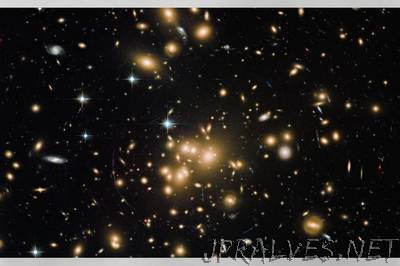
“After more than a year of operation at the Department of Energy’s (DOE’s) Oak Ridge National Laboratory (ORNL), the COHERENT experiment, using the world’s smallest neutrino detector, has found a big fingerprint of the elusive, electrically neutral particles that interact only weakly with matter. The research, performed at ORNL’s Spallation Neutron Source (SNS) and published in the journal Science, provides compelling evidence for a neutrino interaction process predicted by theorists 43 years ago, but never seen. “The one-of-a-kind particle physics experiment at Oak Ridge National Laboratory was the first to measure coherent scattering of low-energy neutrinos off nuclei,” said ORNL physicist Jason Newby, technical coordinator and one of 11 ORNL participants in COHERENT, a collaboration of 80 researchers from 19 institutions and 4 nations. The SNS produces neutrons for scientific research and also generates a high flux of neutrinos as a byproduct. Placing the detector at SNS, a mere 65 feet (20 meters) from the neutrino source, vastly improved the chances of interactions and allowed the researchers to decrease the detector’s weight to just 32 pounds (14.5 kilograms). In comparison, most neutrino detectors weigh thousands of tons: although they are continuously exposed to solar, terrestrial, and atmospheric neutrinos, they need to be massive because the interaction odds are more than 100 times lower than at SNS. The scientists are the first to detect and characterize coherent elastic scattering of neutrinos off nuclei. This long-sought confirmation, predicted in the particle physics Standard Model, measures the process with enough precision to establish constraints on alternative theoretical models. Typically, neutrinos interact with individual protons or neutrons inside a nucleus. But in “coherent” scattering, an approaching neutrino “sees” the entire weak charge of the nucleus as a whole and interacts with all of it. “The energy of the SNS neutrinos is almost perfectly tuned for this experiment—large enough to create a detectable signal, but small enough to take advantage of the coherence condition,” Newby said. “The only smoking gun of the interaction is a small amount of energy imparted to a single nucleus.” That signal is as tough to spot as a bowling ball’s tiny recoil after a ping-pong ball hits it. Physicist Juan Collar of the University of Chicago led the design of the detector used at SNS, a cesium iodide scintillator crystal doped with sodium to increase the prominence of light signals from neutrino interactions. After trying more sophisticated technologies, he went back to simple inorganic scintillators. “They are arguably the most pedestrian kind of radiation detector available, having been around for a century. Sodium-doped cesium iodide merges all of the properties required to work as a small, ‘handheld’ coherent neutrino detector,” he said. “Very often, less is more.” Success depended on finding the right combination of neutrino detector and source. “The detector was designed with SNS in mind,” Collar said. “SNS is unique not only as a neutron source, but also as a neutrino source. It will provide us with opportunities for many more exciting sorties into neutrino physics.” Because SNS produces pulsed neutron beams, the neutrinos are also pulsed, enabling easy separation of signal from background. That aspect makes data collection cleaner than at steady-state neutrino sources such as nuclear reactors. Three neutrino flavors were seen by COHERENT—muon neutrinos that emerged instantaneously with the neutron beam and muon antineutrinos and electron neutrinos that came a few microseconds later. “The Standard Model predicts the energy and time signatures we saw,” Newby said. “Juan [Collar] wanted to make sure that he chose a detection mechanism with the timing resolution to distinguish the prompt from delayed signals.””
